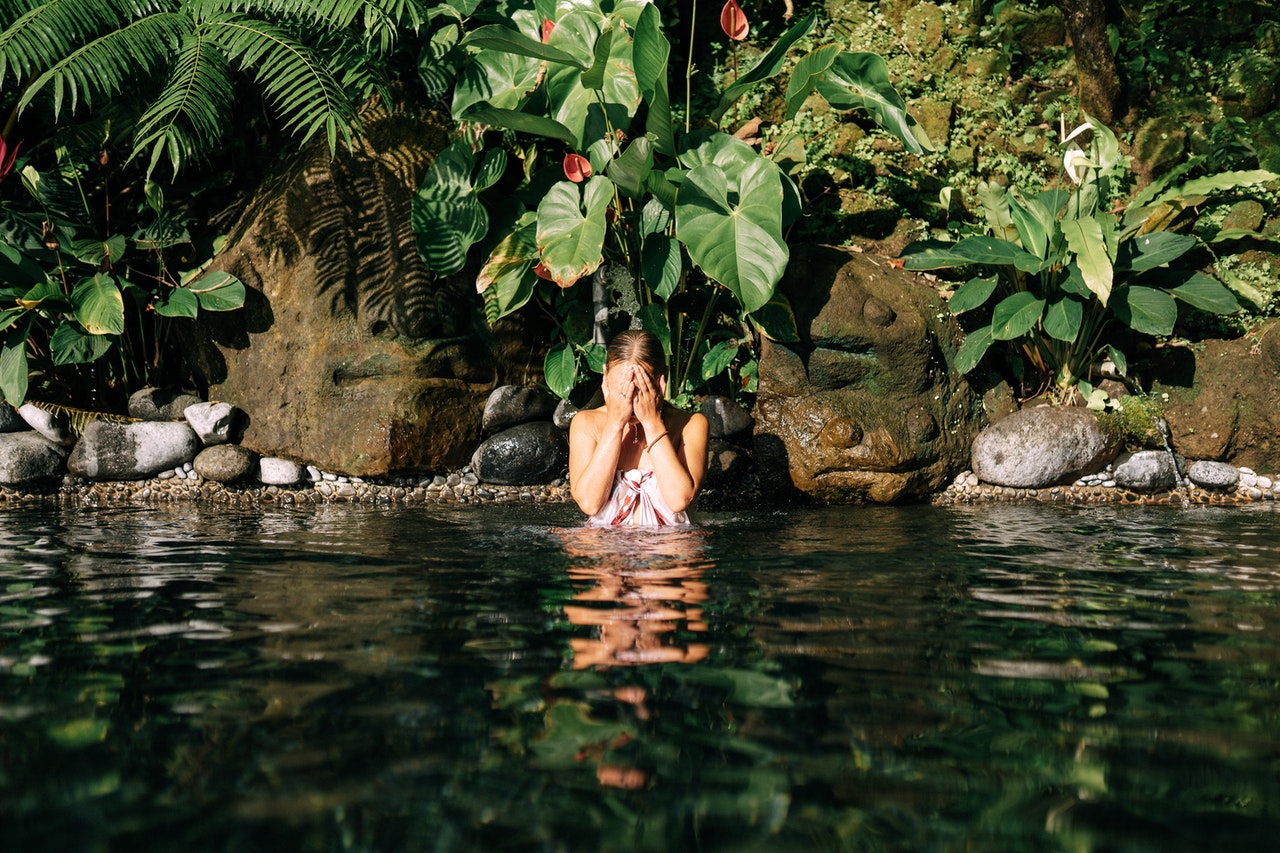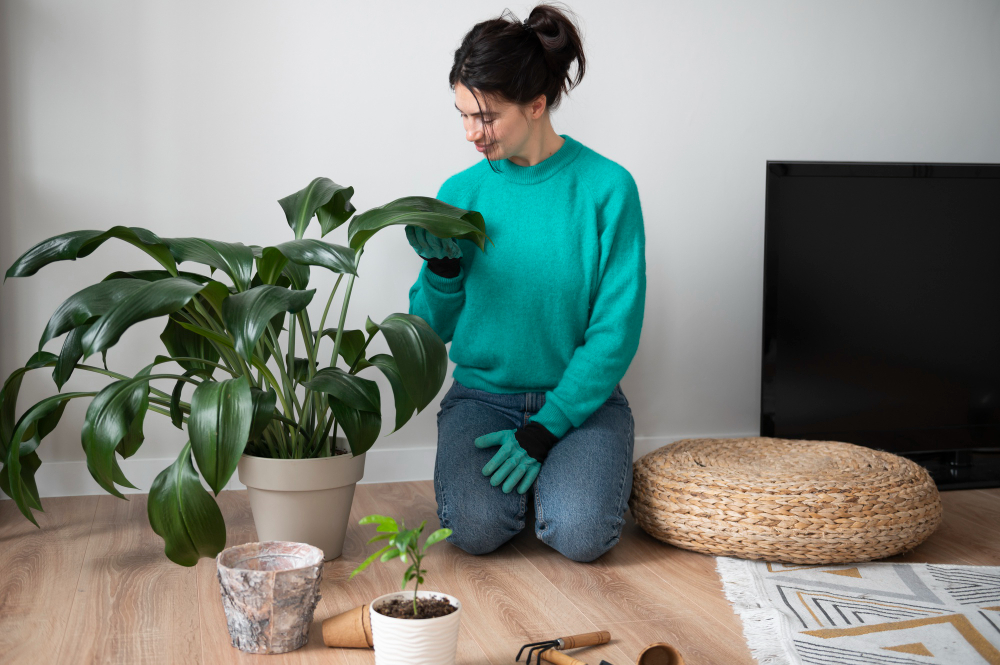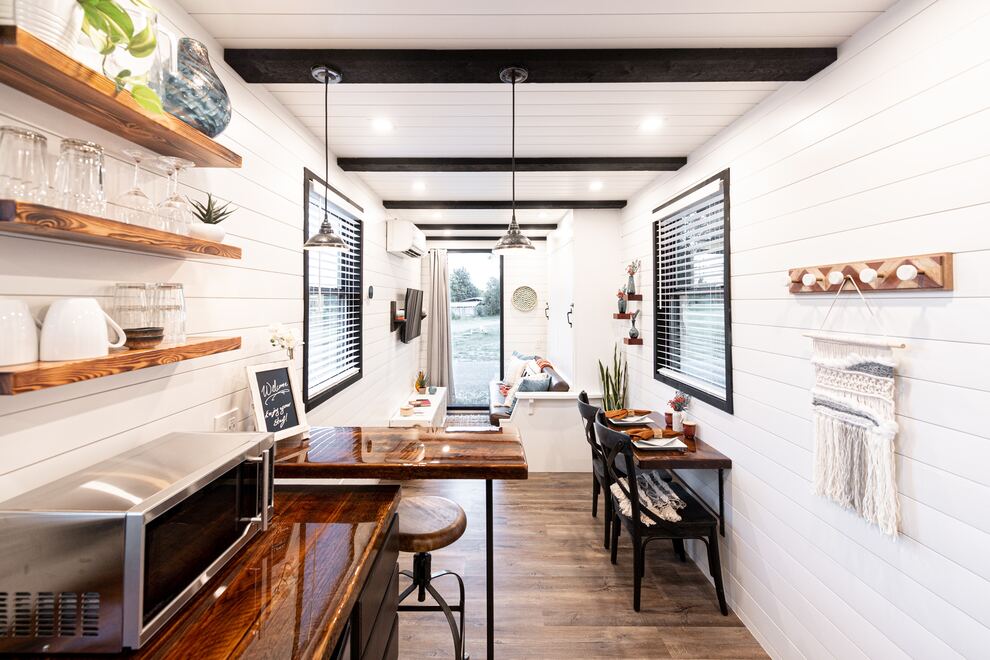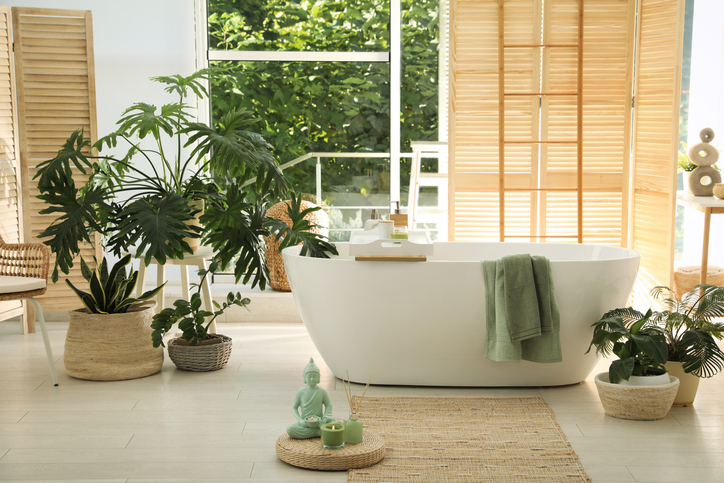During the hot summer months, there’s nothing quite as fun and relaxing as taking a dip in the cool waters of your pool. If you’re looking for a unique, environmentally friendly way to enjoy some swimming in your backyard, a natural swimming pool is a great choice. These natural pools offer a unique way to add beauty to your favorite outdoor space while enjoying a nice, cool dip. This guide explains what a natural swimming pool is, how you can add one, and the best ways to maintain it for a fabulously fun summer.
What is a Natural Swimming Pool?
The concept of using natural swimming pools at home for recreational purposes got its start in Europe but has been steadily gaining popularity here in the United States and in other nations with hot weather and warm climates. These types of pools are designed to mimic ponds and other bodies of water you’d see in the wild, thanks to their irregular shapes. Most natural swimming pools include rocks and waterfalls to give them an organic look and feel. Unlike a traditional chlorinated pool, these pools don’t use chemicals and electric filters to keep the water clean. Instead, they rely on gravel and organic filters like healthy bacteria and plants to provide you with clean water and a safe place to swim.
How Natural Pools Work
Natural pools have two main parts: the swimming area and a regeneration zone that includes a variety of plants that use hydroponics to feed on the water. The regeneration zone may need to be as large as the swimming zone, so be prepared to sacrifice a large part of your backyard to the pool.
Aerobic and anaerobic bacteria create a natural, biological filter that removes bacteria and debris from the water. When water passes through the natural filters, it goes into the regeneration zone, and then the clean water returns into the swimming area for you to enjoy safely. A bit of algae growth is normal and necessary to maintain the regeneration zone.
The Benefits of Having a Natural Swimming Pool
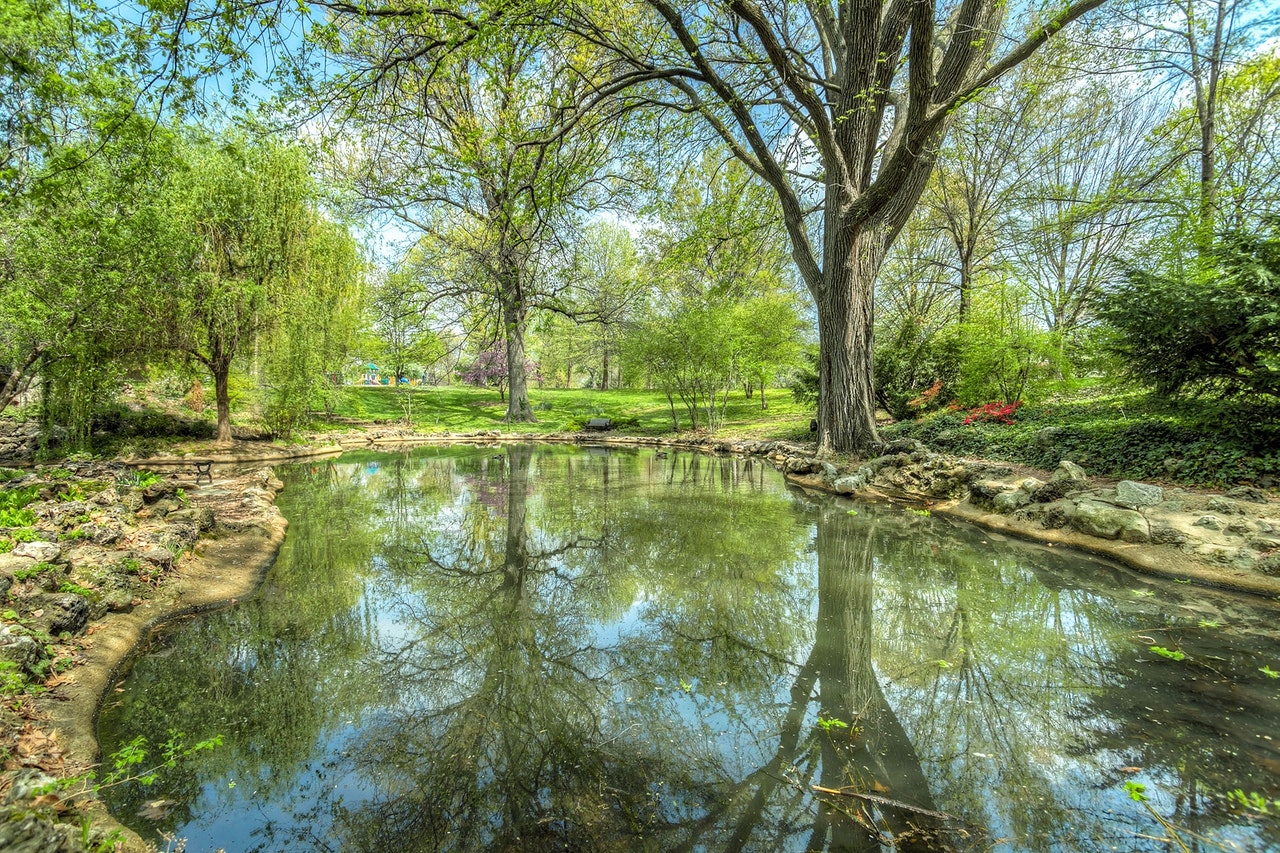
There are many great benefits to choosing a natural swimming pool.
- Sustainability. These pools are sustainable and adaptable. You can fill them with concrete so that they closely resemble a traditional swimming pool in terms of aesthetics.
- Hidden filter. The gravel filter for your natural swimming pool can be hidden underground so it stays out of sight.
- Easy maintenance. A natural pool is much easier to maintain than a standard pool since you don’t have to constantly treat with chemicals or monitor the filter.
- All-climate. You can enjoy these pools in a range of climates, whether you want to swim on a sunny day or enjoy a nice dip during the autumn. Just keep in mind that these pools will freeze over during the winter months.
Environmental Benefits
Natural swimming pools are an eco-friendly alternative to chlorine-treated pools. Here are some ways that this type of pool can give you the backyard fun you want without harming the environment.
- Chemical-free. Chlorine contributes to acid rain and other harmful things like global warming. A natural swimming pool doesn’t need chlorine and other harsh chemicals, which means it’s already an eco-friendly choice.
- No power needed. Your natural swimming pool doesn’t rely on powered filters, saving energy and helping to reduce your family’s carbon footprint.
- Wildlife magnet. These pools look more natural to animals, which may attract more wildlife and birds to your backyard.
- Easy maintenance. Aside from being easier in terms of remodeling and building your pool, natural pools also require less maintenance and use absolutely no chemicals to keep them clean.
Maintaining a Natural Swimming Pool
It’s easier to maintain a natural swimming pool than a chlorinated pool, but here’s what you’ll need to do to take care of your pool.
- Trim and prune trees and plants around your pool regularly to help reduce debris.
- Use a skimmer net to clean your natural pool once a week to remove any organic matter that may be on the surface of the water.
- Cover your pool with a net when it’s not in use to keep excess debris out.
- Check your pool’s regeneration zone regularly and keep the bottom clear of dead leaves, sticks, and other debris so that the plants can thrive.
- If you live in a cold climate, your bio-filtering plants may freeze. Be prepared to remove dead plants and replace them with new ones every spring just in case.
Using Plants, Fish, and other Elements to Clean Your Natural Swimming Pool
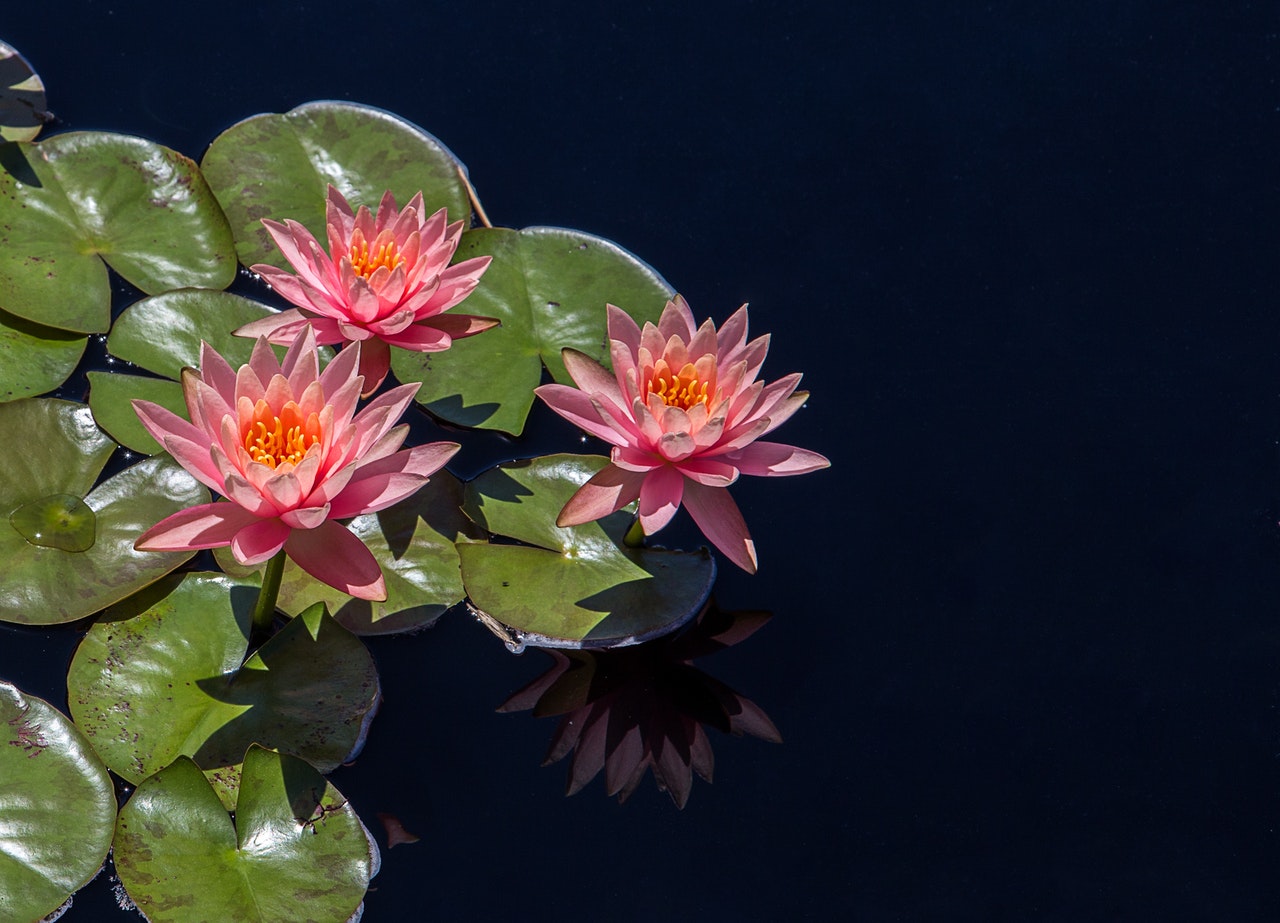
There are several natural elements, including plants and animals, that you can use to help keep your natural swimming pool clean. Here’s how to incorporate them into your design.
- Choose plants that will thrive in your climate, and purchase them from a native plant supplier whenever possible.
- Plant sedges and rushes around the perimeter of your pool, and arrowhead and pickerelweed in the shallow areas. Submerged plants like common waterweed and hornwort are excellent cleaners, thanks to their high levels of oxygen output.
- Be sure to plant a mix of plants that are submerged underwater, plants that float, and plants that thrive around the edges of your pool. Floaters like pondweeds and duckweed drift along the surface to keep the water clean.
- Group your plants by height and type, and anchor them with lots of gravel. The gravel keeps the plants in place and helps promote filtration.
- The more variety of plants you have in the regeneration zone, the less algae you should have to deal with. Never try to kill algae with chemicals. Instead, just add more plants!
- If you want to add fish to your natural swimming pool, they must be kept in the swimming area and not in the regeneration zone. Never feed your fish packaged food if they’re going to live in your pool.
- Some animals, like ducks, frogs, and various bird species, are not recommended since they can leave bacteria-laden waste behind and make your swimming water dirty.
How Safe is a Natural Swimming Pool?
Since you’re probably used to traditional chlorine pools, you may wonder how safe a natural swimming pool is. Here are some facts about the safety of natural swimming pools.
- Since natural pools don’t use chemicals, you won’t need to worry about allergic reactions, eye irritation, or toxic materials seeping into your groundwater.
- Aquatic plants are generally safe and don’t typically cause any adverse reactions.
- Install a fence around your natural pool to prevent children from accidentally falling in and to keep wildlife out.
- You shouldn’t need to worry about the pH level of your pool water since it doesn’t use chemicals to stay clean. However, there are pH testing kits you can purchase if you want to check the levels.
- Use a smooth liner or concrete to line the bottom of your pool instead of raw rocks and gravel so you won’t have to worry about cutting your feet on the rocks.
Getting Started: How to Build Your Own Natural Swimming Pool
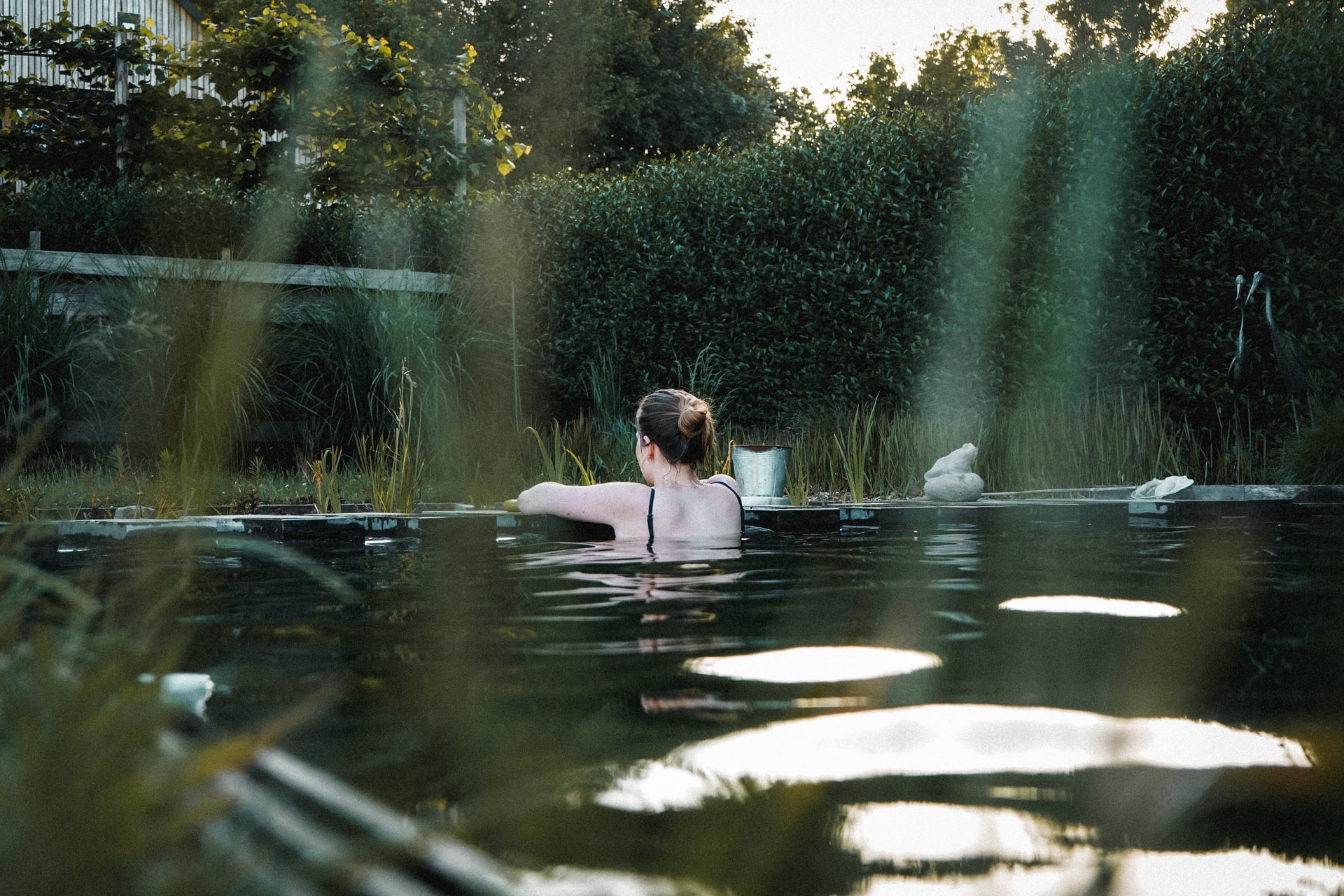
If you’re ready to design and build a natural swimming pool in your own backyard, here’s what you’ll need and how you can make it work.
- Start by choosing the size and location for your pool, then draft a realistic budget you can stick to as you go through the building process.
- Keep the pool shape simple and the water shallow to reduce maintenance and keep your pool cleaner.
- Reserve at least half of your pool size for the regeneration area. Remember, this part of the pool will be separate from the swim zone.
- Set up your pool in the lowest part of the yard to ensure proper drainage away from your home. Make sure there are plenty of drainage channels so excess water can escape and be routed away from your property.
- Use a black liner as an affordable way to make your pool look natural while helping to trap the heat from the sun.
- Gather your materials before you begin. You’ll likely need cement, sand, gravel, pool fittings, boards for the formwork, and clay. You’ll also need a shovel, hammer, pliers, hacksaw, level, plumb, and a cement mixer.
- Once you have the location, shape, and size ready to go, you can begin digging and building your natural pool. Once you’re done, don’t forget to stock your pool with plenty of bio-filtering plants to keep the swim zone naturally clean.
Designs and Decoration Elements
Once your natural swimming pool is in place, it’s time to think about some ways to make it beautiful.
- Add natural boulders and landscaping around the edge of your pool to create a beautiful border and give it an organic look.
- Enhance the serenity of your pool by incorporating a hot spring spa into the design, providing a luxurious and relaxing experience.
- A waterfall is a great feature that adds a calming touch to your pool while keeping stagnant water moving.
- Place solar-powered lights around the edge of your pool to illuminate the walkway and add a warm glow when the sun goes down.
- A pergola or sunshade over or next to your pool will keep you cool and prevent excess debris from falling into the water.
Examples of Amazing Natural Pool Designs
Check out these awesome examples of beautiful natural pool designs for some inspiration.
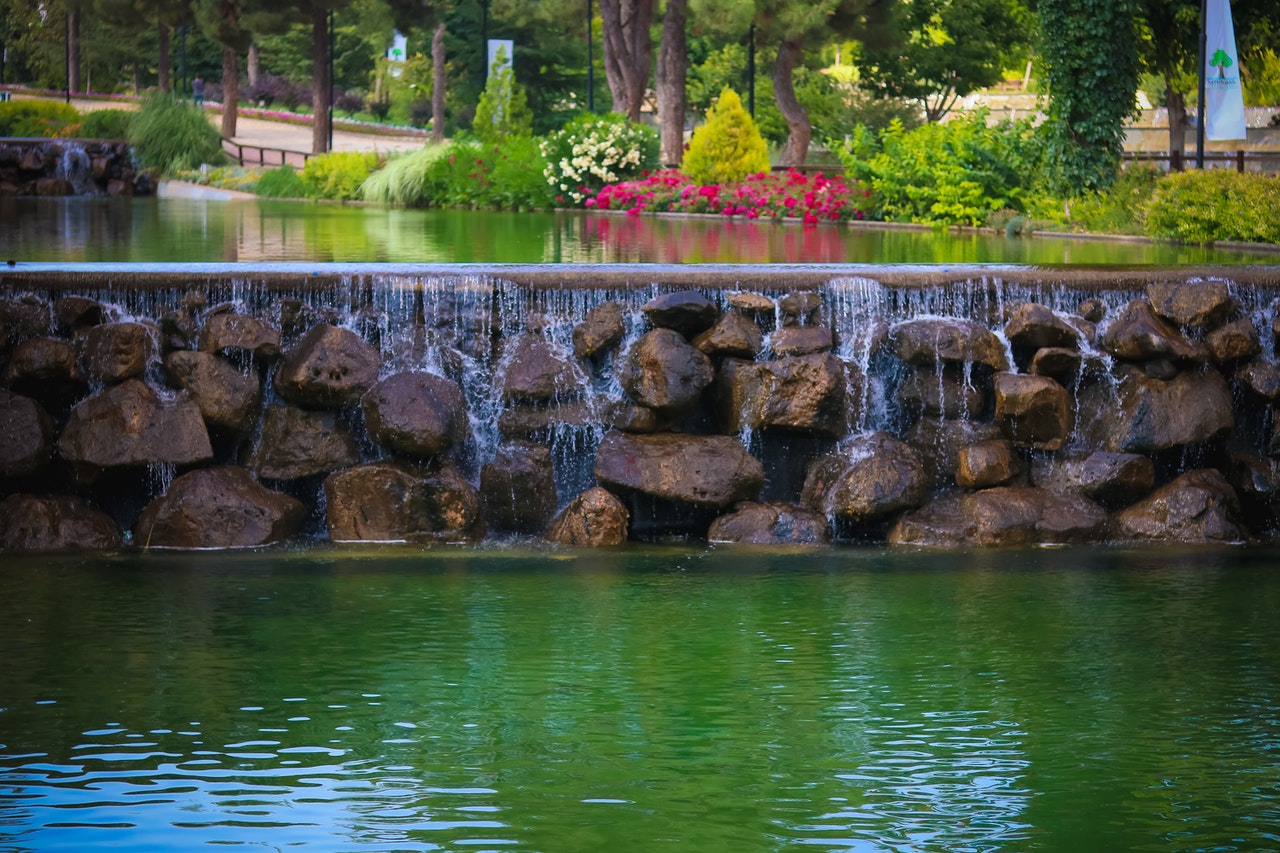
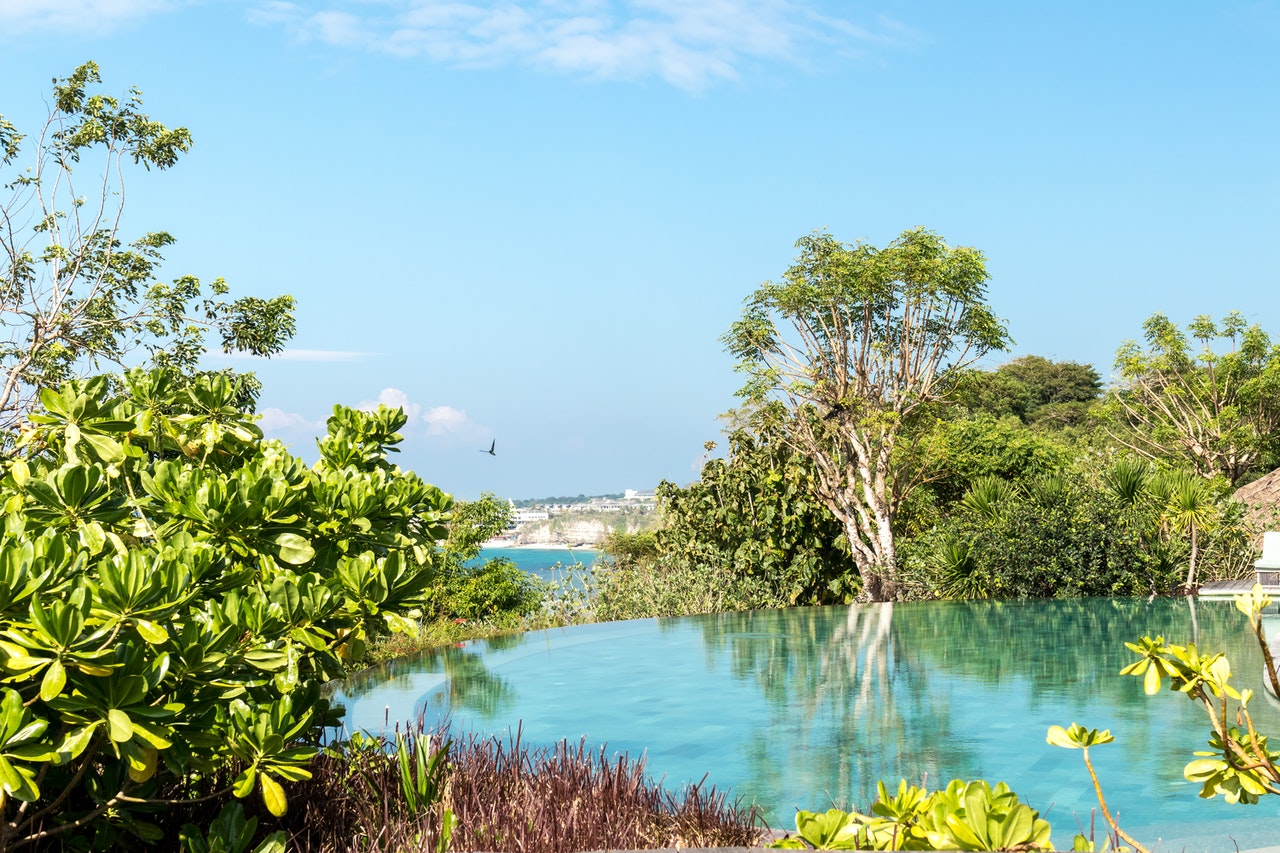
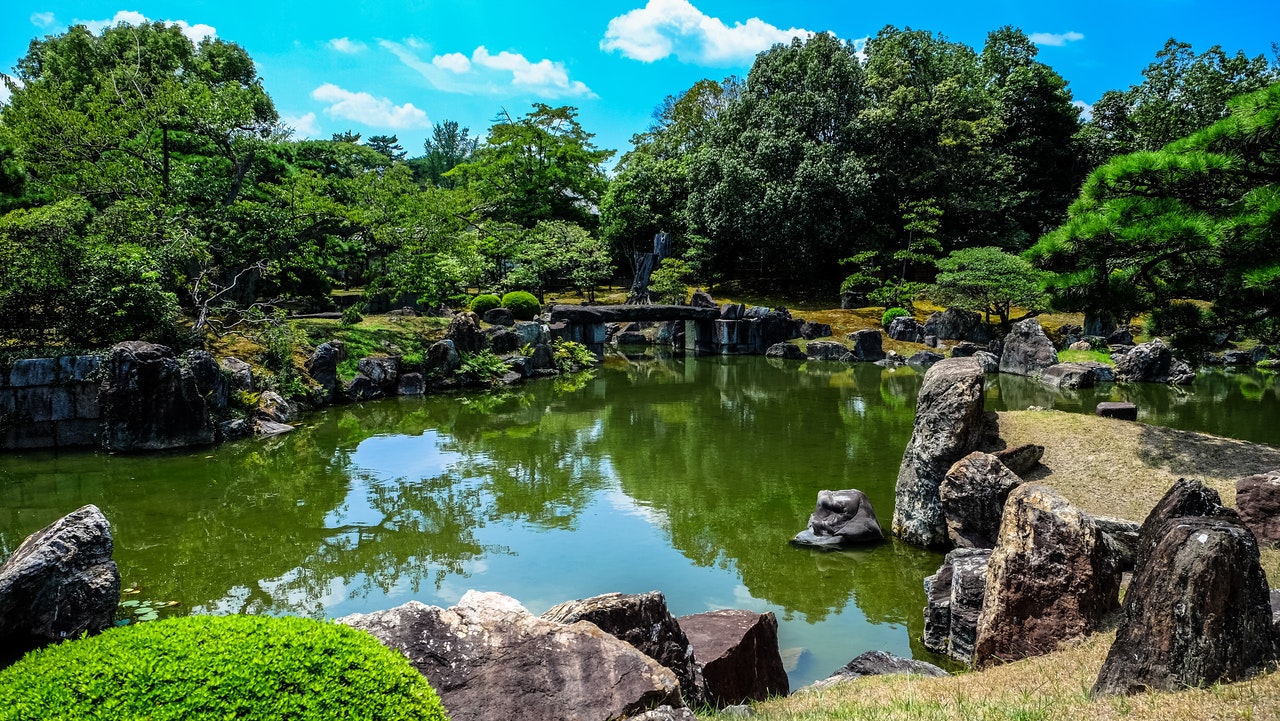
With the right setup, the right animals, and a variety of bio filtering plant life, you can enjoy a natural swimming pool in your own backyard. These eco-friendly pools are an environmentally sustainable alternative that offers you a safer way to swim than traditional chlorine pools. Not only will a natural swimming pool add a beautiful look to your home, but it will provide you with a unique way to enjoy the hot days of summer in a fun, new, and natural way.
